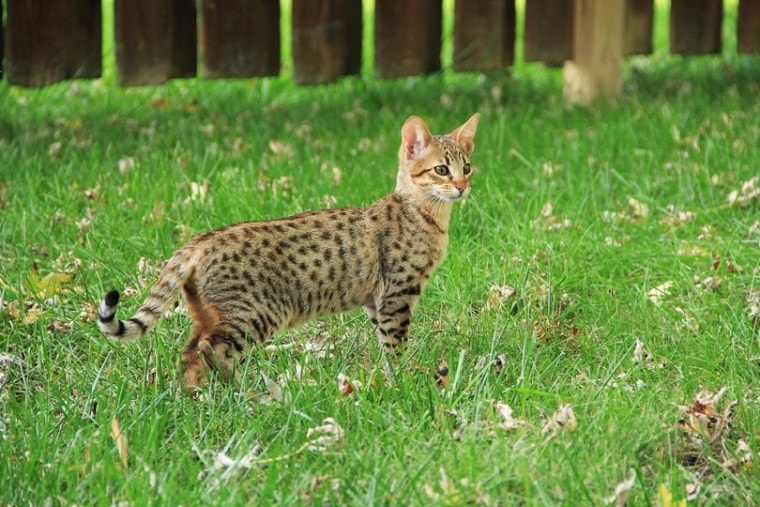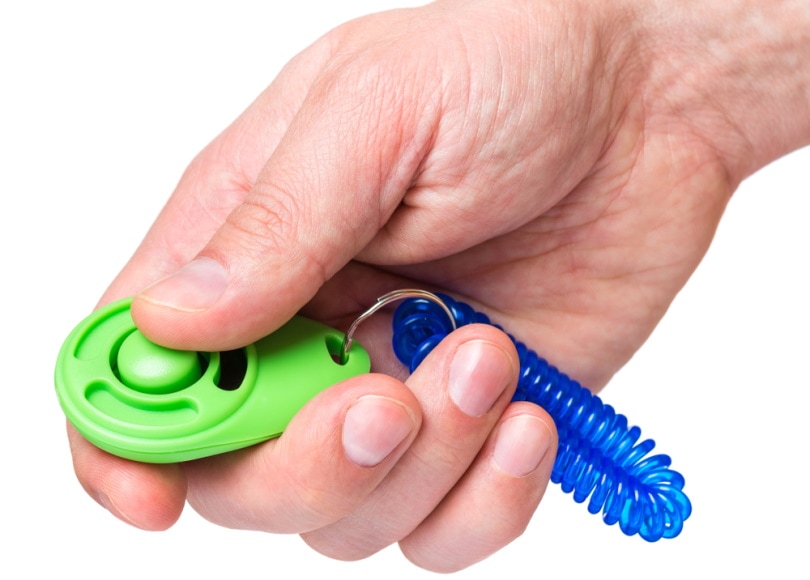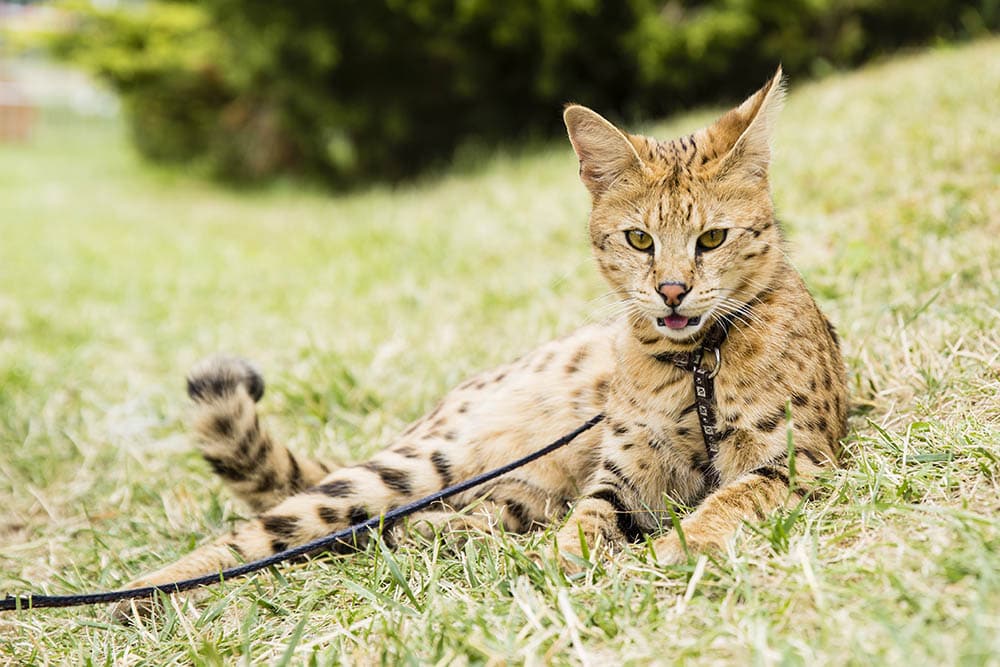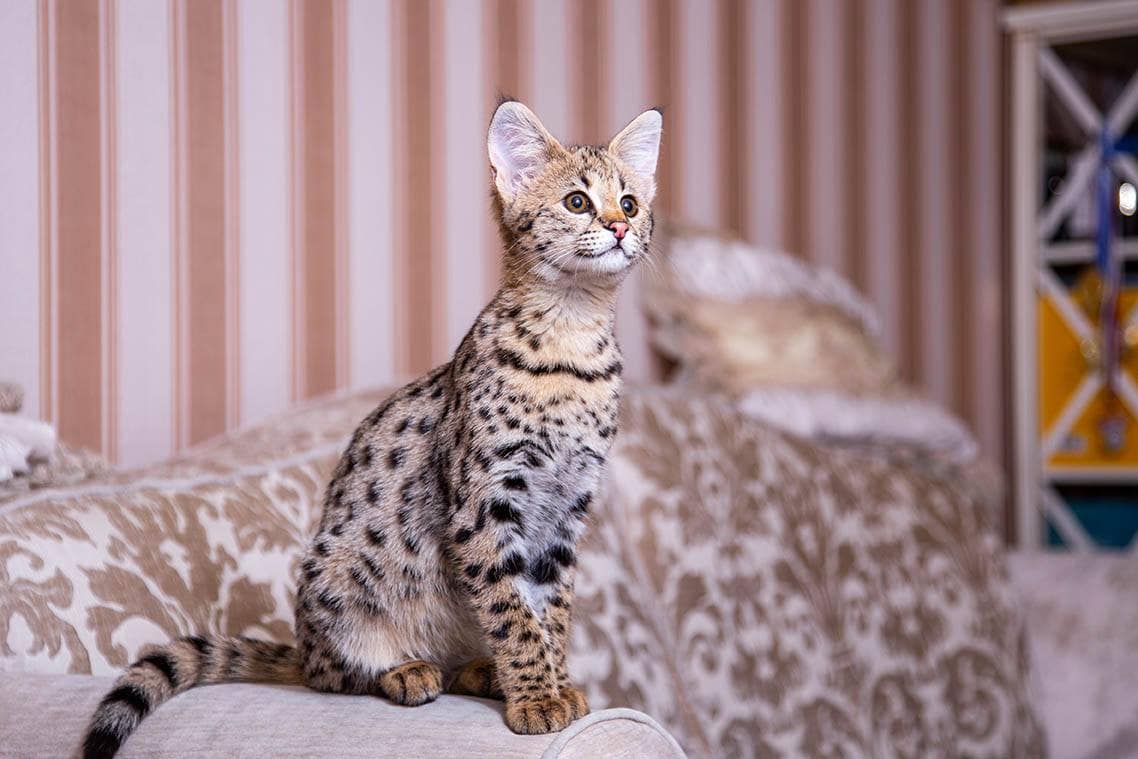
Savannahs are a special cat breed. They have a wild appearance with long legs, an athletic build, and a spotted coat. Despite their looks, these cats are domesticated, and they tend to be very loyal and affectionate to their owners. They’re also very athletic and smart, so both the cat and owner benefit greatly from training sessions. Training helps stimulate the Savannah’s mind and keeps them entertained and out of trouble, like climbing on curtains and getting into cupboards.
Savannahs are relatively easy to train, but the beginning stages will require some extra patience as you learn what’s most effective for your cat. Here are a few things you can try to make training sessions a regular part of your Savannah’s routine.

The 5 Great Tips on How to Train a Savannah Cat
1. Start with Exercise
Since Savannahs are high-energy cats, it’s important to help them expend some of their energy so that they can have an easier time focusing on training sessions. So, before you begin your training session, do a few activities that make your Savannah engage in both physical and mental exercise.
Just make sure not to wipe out your Savannah completely. You’ll still want it to have some energy to be interested in training. It may take several tries, but you’ll eventually find the sweet spot where your Savannah is focused and ready to train.
2. Clicker Training
Some Savannahs respond well to clicker training. Clicker training involves a clicker or another audible cue that helps reinforce desired behavior. Before using a clicker, you must make sure that your cat has a positive association with the sound it makes. So, start with a few basic training sessions to help establish a strong foundation for your clicker training.
Set off the clicker sound near your cat. Then, immediately give your cat a treat. Keep doing this until your cat starts to realize that the sound triggers a treat. Once your cat understands that a reward comes with the treat, then you can move on to using the clicker for easy and simple tricks. Eventually, the clicker becomes the reward, so you won’t have to use treats every time you want to train your cat.

3. Early Socialization and Desensitization
Savannahs are naturally pretty social, but they still need to learn how to interact appropriately with people and other pets. Early socialization will teach young Savannah kittens to get used to being handled by people and learn to adapt better to changes. Kittens actually learn the social dos and don’t while interacting with their siblings under their mother’s supervision. This is why it is very important to keep kittens with their mothers until they are fully weaned and at least 7-8 weeks old.
Kittens that have been properly socialized will be more confident and willing to explore, and they tend to be easier to train. So, it doesn’t hurt to regularly expose your Savannah kitten to new sights, sounds, and people in manageable increments.
4. Keep Training Short and Fun
While Savannahs are intelligent, they tend to get bored easily. So, your first few training sessions should be short, easy, and engaging. Start with simple tricks and keep your voice bright and optimistic. Aim to finish the session while your Savannah cat is still engaged. If you ever start to feel yourself getting frustrated, take a break and start up again after a few minutes.
If your Savannah shows signs of boredom, let them go and give them a little time before you try another training session. You can also use special treats reserved only for training sessions to try to persuade your cat to participate.

5. Leash Training
Since Savannahs are active and curious, they’re a cat breed that can benefit greatly from learning to walk on a leash. Leashes can help them explore the outdoors without getting lost or caught in dangerous situations.
Leash training can take some time. Your Savannah first has to get comfortable with wearing a harness. It’s highly unlikely that it’ll like wearing the harness right away. So, it’s important to be patient and train in increments.
Start by putting the harness on the floor and letting your Savannah investigate. Every time it gets close to the harness, you can give it a treat or other reward that it likes. Once your Savannah becomes comfortable standing near the harness, you can gently let the harness touch its body and immediately follow up with a reward. Eventually, you should be able to put the harness on your Savannah with no problem.

Savannah Cat Temperament
Savannahs are smart, energetic, and social. This combination of traits makes them fun companion pets, but bored Savannahs can end up causing a lot of trouble, especially because of their large size.
Savannahs are playful and can interact well with young children. They aren’t the best cats for older adults or people with mobility issues because they enjoy climbing and perching in high places. They need an owner that can keep up with their energy and play with them.
Since Savannahs are social and like receiving attention, they do well with owners that enjoy entertaining and inviting guests to the home frequently. These cats don’t experience too much stress from encountering new people and will most likely make an appearance and demand attention from everyone.

Other Savannah Cat Care Needs
Savannahs have relatively low grooming needs. Their coats require minimal brushing, and they don’t really need baths unless they get into something dirty.
Since Savannahs have strong social needs and don’t do well being alone for long hours. They often do well living with other animal companions or in homes where someone is usually around.
Savannah owners must be prepared to modify their homes to accommodate this energetic and athletic cat. You may need to purchase more than one cat tree so that there are plenty of places for the cat to climb and perch. You’ll probably have to relocate or hide fragile items, like vases and plants because Savannahs can easily knock them over as they attempt to climb shelves.
Make sure to have enrichment toys to provide mental stimulation for your Savannah. These cats may also benefit from learning how to play with and solve puzzles. You’ll probably have to schedule multiple play sessions throughout the day because these cats are very energetic and athletic.

Conclusion
Savannahs are fun and adventurous cats that love mentally stimulating activities. Training them can keep them entertained and happy, and it can also prevent them from engaging in destructive behaviors.
When you begin training a Savannah, make sure to keep training sessions short and fun. Eventually, your cat will learn to enjoy training sessions, and it’ll be easier to teach them new things.
Featured Image Credit: Lindasj22, Shutterstock





